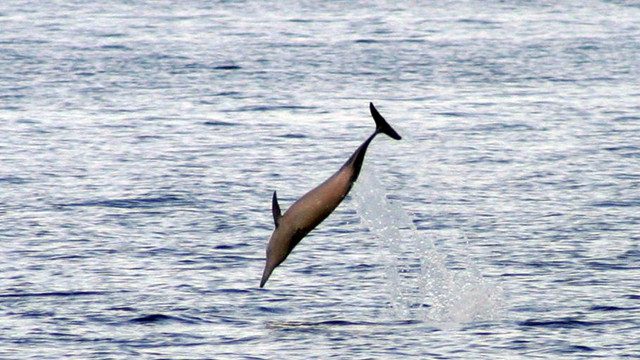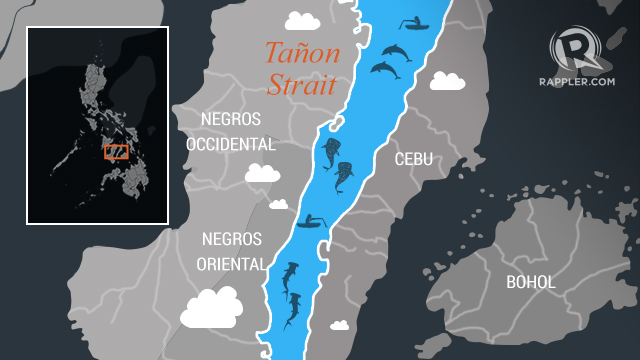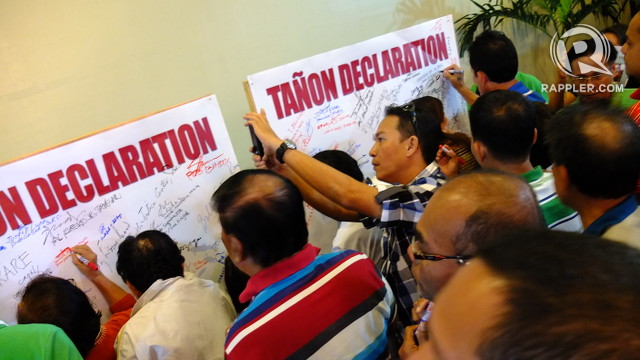SUMMARY
This is AI generated summarization, which may have errors. For context, always refer to the full article.


CEBU CITY, Philippines – Mayors, barangay captains, scientists, non-governmental organizations, and fisherfolk organizations declared their commitment to protect Tañon Strait, the country’s largest marine protected area.
They signed a declaration to abide by a newly-crafted general management plan on Thursday, February 12, the last day of a summit held in Cebu City that gathered around 400 participants.
“I want to commit myself. I want to be part also of the ownership of the plan,” said Tayasan Mayor Susano Ruperto Jr, explaining why he decided to sign the declaration. Tayasan is a coastal town in Negros Oriental which is bordered by the 530,000-hectare Tañon Strait.
A majority of his constituents are fisherfolk who depend on the strait for their livelihood, said Ruperto.
“My biggest challenge is, because of the degradation of the Tañon Strait, our fisherfolks are getting meager income as of this time. While it is late, it’s never too late that we should begin preserving and restoring the beauty of Tañon Strait,” he told Rappler.

A general management plan for the major fishing ground was due 17 years ago after it became a protected seascape by virtue of a presidential proclamation in 1998. The vastness of the area and the conflicting interests of an equally vast number of stakeholders have led to major bottlenecks that kept on delaying the plan.
The summit was co-convened by Oceana, one of the largest marine-focused conservation groups in the world, and the Department of Environment and Natural Resources (DENR).
Clearing the confusion
The declaration, among other things, clarified which tasks go to which stakeholders.
It was decided that 3 major agencies would lead the management of Tañon Strait: DENR Protected Area Management Board (DENR-PAMB), the local government units, and the Bureau of Fisheries and Aquatic Resources (BFAR).

Dr Lem Aragones, a marine mammal scientist who has been studying Tañon Strait since 1997, says overlap of tasks is a major contributor to the mismanagement of the protected area.
The national government, two regions, 3 provinces, 42 coastal towns, and 300 villages have jurisdiction in different parts of the strait leading to vagueness of who is in charge and, often, to finger-pointing and buck-passing.
“The ambition of the assembly is to put all these stakeholders together, lay down all the cards on the table, talk how to make sure everybody understands the legal framework of a protected seascape and marry it to their own ordinances and management schemes,” Aragones told Rappler.
For the specific tasks of the agencies, read the Tañon Strait Declaration below:
One major achievement of the general management plan was in harmonizing the tasks of the agencies.
If before DENR-PAMB and the LGUs would deploy their own enforcement officers to catch illegal fishers or commercial fishers, they will now coordinate with one another and assist one another.
This was a welcome development for Barangay Captain Pablito Bantoc of Tacup village in San Remigio, Cebu.
His village does not have funds to buy a speedboat for its bantay dagat (sea guards), leaving them powerless against dynamite fishers.
“Bibigyan daw kami ng pondo para makabili ng pump boat. Tutulong daw ang DENR (We will be given funds to buy a pump boat. The DENR says they will help),” he told Rappler.
Under the declaration, the DENR is tasked with providing financial assistance for sea guards or protected area rangers. Park Superintendent Viernon Grefalde said the plan is to deputize 300 protected area rangers.
The DENR-PAMB and LGUs will also work together in development programs like conservation, livelihood, research, maintaining a Tañon Strait database, and climate change adaptation. Previously, these tasks were pursued separately by the two agencies, leading to redundancy and conflict. In many areas, they were not pursued at all.
The tasks that will strictly be DENR’s alone are the issuance of tenurial agreements for businesses and community organizations and permit to operate.
The LGU will be in charge of issuing building permits, business permits, fishing permits, mariculture permits and in collecting business tax and income tax.
Both will have a share of users’ fee imposed for ecotourism or ecological services.
Concerns unresolved
The summit was not without its hitches.
Many issues were identified during open fora and workshops conducted to allow participants to process the proposed general management plan.
One of the stickier issues was the composition of the site management unit. There are supposed to be 4 SMUs representing 4 major geographical delineations in Tañon Strait, one each for Cebu Island and Negros Occidental and two for Negros Oriental.

The SMUs are groups which report directly to the PAMB executive committee, the most powerful decision-making body for Tañon Strait.
Some had different ideas of who should be part of the SMUs: should each SMU have different compositions based on the need of that province or should their be a uniform composition across all SMUs?
Some wanted to include academe, while others said there should be more representation from the fisherfolk groups who are the most affected by what happens to Tañon Strait.
In the end, the issue was not resolved. Organizers said the issue could be taken up during future working group discussions.
Fisherfolk group leader Delfa Talaid noticed the DENR seemed to prioritize the processing of permits for business to operate in Tañon Strait rather than on permits to give tenure to community organizations who have been taking care of mangroves and fish sanctuaries since the 1980s.
There are individuals and corporations who want to operate resorts or fish ponds in these areas, at the expense of fisherfolk who are benefiting from those sanctuaries through ecotourism activities and ecological services.
“They are protecting, managing, spending their own money for that protection. The DENR, being their partners, should provide tenure to the organization so that we have the assurance that [the coastal habitats] will not be taken away from them,” she told Rappler.
It was also proposed that certain parts of Tañon Strait be declared strict protection zones – areas with limited human activities considered as “no take” zones. These include coral reefs, seagrass beds, migration routes of dolphins and whale sharks and mangrove forests.
The rest will be multiple use zones where people will be allowed to live and pursue “sustainable resource use” – agroforestry, establishment of fish corrals, fish cages, fish pens and seaweed farming.
Despite disagreements and unresolved issues, participants say the summit achieved what it set out to do. But more is left to be done.
“This is only the beginning. In the months, years to come, if we are really sincere, perhaps the bounty of Tañon Strait will return,” said Pedro Valparaiso, member of a people’s organization in Badian Island, Cebu.
If the management plan becomes successful, Tañon Strait could become a shining example for other mismanaged protected areas in the country. (READ: PH natural parks management rated ‘poor’ to ‘fair’)
Aragones said, “If we can fix Tañon Strait, then I am confident we can fix anything.” – Rappler.com
Add a comment
How does this make you feel?
There are no comments yet. Add your comment to start the conversation.